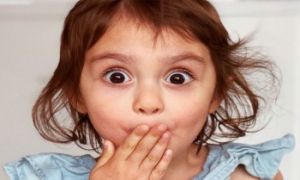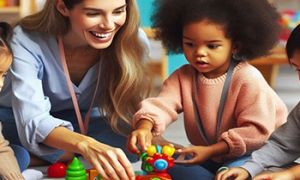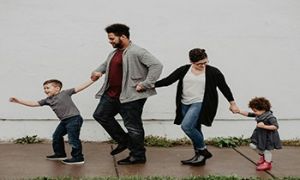This is a guide on How to Write a Learning Story. It provides information on What Is A Learning Story, Writing A Learning Story, Sample Of A Learning Story, Linking To The Outcomes, Group Learning Stories and more.
A Learning Story is just that, a story that tells a tale to those who are reading it. It should focus on a child or a group of children, about the decisions they make and the consequences that follow. With detailed descriptions like in a narrative, a Learning Story provides an informative approach to the experience and the events that occurred.
What is a Learning Story?
A Learning Story is a format used to document a child’s learning. It uses “storytelling” to describe a child’s learning process. There are many details that are incorporated into a learning story that describes: the experience that unfolds or an event, how the child interacts during the experience or with others, conversations, interests, skills etc. Basically, it’s a narrative of recognizing and describing the learning that is taking place through a child’s play.
A Learning Story is different from observations such as running records and anecdotal records as it focuses on what the child CAN do rather than what the child cannot do. Unlike observations, there is no need to focus on a specific skill and what steps the child takes in order to complete that specific skill. In observations, you describe exactly what the child does such as “Robert, picked up the pencil with his left hand using a palmer grasp began to write the first letter of his name...” With a learning story, it differs as you write it like a story, for example, “Robert was eager to begin to write his name...”.
Learning Stories are also used as a summative assessment tool in interpreting a child’s learning habits that take place during the experience. This helps us to evaluate and plan for further experiences to extend upon a child’s interests and strengths.
The Learning Story Format
Within the learning story format, there are four main components that need to be completed. They are the learning story itself, analysis of learning, extension ideas and linking to the EYLF Learning Outcomes. Photos and parent input can also be added although these are just optional. However, using photos is a great way for others to see the learning story in “action” so to speak. As long as you got these areas covered then you can go about creating your own format.
How to Write a Learning Story for an Individual Child
To begin, have photos of the child during the experience. It’s beneficial to use photos as it helps to create the story and the more details you can convey. You can simply write the text to accompany the photos using descriptive details of the learning that took place. Remember that this shouldn’t just be a caption for each photo, you are writing a story.
Start off by talking about when and where this experience took place – a setting where your story starts. Describe the events that led up to this experience. It’s recommended that you talk about yourself in the first person using “I”. This gives you an opportunity to put yourself in the same experience as the child and describe what you watched and discovered.
For example:
Over the past couple of days, Kelly has been identifying different colours within the environment. I wanted to extend this experience by introducing a colour-mixing experiment. While outside today I set up the paint easel near the table along with 3 paint pots of yellow, blue and red.
Next, move on to the events that happened during the experience. Introduce the “characters” of the learning story. You can include conversations and interactions, describe what you had observed, what the child did through the experience, describe the reaction, the scene or the event in detail etc. Simply try to describe what the child says and does.
For example:
As I was setting up Kelly stood watching me. “I like painting, is it my turn to paint”. Kelly walked over to the easel. I asked Kelly what she would be painting. Kelly turned and said, “It’s a surprise”. She confidently drew a circle on the piece of paper using blue paint. Smiling, on top of the blue circle, Kelly painted a red circle. She mixed both the blue and red together. She chuckled “I made purple”. Under the circle, Kelly painted a straight yellow line and on top of it, used blue “Green, that’s what I want” she said quietly to herself. Next, Kelly used the yellow paint to make a semi-circled purple circle. Kelly walked over to me and tugged at my jacket “I’m almost finished, want to see” she said excitedly. Kelly took my hand and we walked over to where she had been painting. She pointed to her painting I did it, all by myself, it’s a flower” Kelly said. “You did such a fantastic job! I can tell you really concentrated on making your flower perfect and it is” I said. Kelly smiled proudly. “Can I hang it near the door, so mum can see” she asked. “Sure, you want to take it home” I asked. “No, I can take it home later, I want to keep it here” Kelly replied. I took Kelly’s painting off the easel and hung it on the drying rack. Before Kelly’s mum (Anne) arrived, we found a spot on the entrance door to display it. When Anne arrived, she walked over to Kelly “hi sweetie, I saw your flower painting hanging on the door. It looks great” she said. Kelly hugged her mum. “Thanks, Mum!”
Analysis of Learning
It’s important that you should identify and include the learning that took place within this experience. Aim to describe why the events are significant to the child and describe why this experience was important for the child involved.
In the very first sentence, you need to identify the learning outcome that the child has achieved through the experience described in the learning story (it can be the main outcome or a sub outcome). The best way to do this is to use a sentence starter to introduce the learning outcome within your analysis. Below are some sentence starters to help you:
- Through this experience...
- As a result...
- It is apparent that...
- With regards to...
- It can be seen that...
- According to...
- As identified...
Once you have a sentence starter as well as the learning outcome you just put it together. Remember to put yourself in the first person by using “I”.
For example:
Through this experience, I observed Kelly as a confident and involved learner.
So, for the sample learning story, I have written I am going to use Learning Outcome 4: Children Are Confident And Involved Learners.
The next step is I’m going to use the following article “How Children Can Achieve EYLF Learning Outcomes”, find the learning outcome I used for my learning story and choose a sub-outcome that best fits. For this, I am going to use "Learning Outcome 4.1: Children develop dispositions for learning such as curiosity, cooperation, confidence, creativity, commitment, enthusiasm, persistence, imagination and reflexivity". If you have already chosen a sub outcome then you don’t have to worry about this bit.
Now that I have selected a sub-outcome from the main learning outcome, using the same article mentioned above I am going to use the points from “This is evident when children” as examples, along with the details I wrote in my learning story to write my analysis. By doing this, it creates a clear link to how the experience in the learning story links with the EYLF learning outcomes.
For example:
I watched as you expressed wonder and interest in your environment “I like painting, is it my turn to paint”, followed and extended on your own interests with enthusiasm, energy and concentration Smiling, on top of the blue circle Kelly painted a red circle and initiated and contributed to play experience emerging from your own ideas .”..it’s a flower”.
To finish off the analysis of learning you can briefly describe your own view of the experience. It doesn't have to be long just a sentence or two will do.
For example:
Kelly, you were so eager to paint your flower. You discovered different colours as you mixed 2 colours together. I could see how proud and happy you were with your painting. You worked very hard to create it.
So now putting all the bits together the analysis of learning reads like this:
Through this experience, I observed you Kelly as a confident and involved learner. I watched as you expressed wonder and interest in your environment “I like painting, is it my turn to paint”, followed and extended on your own interests with enthusiasm, energy and concentration Smiling, on top of the blue circle Kelly painted a red circle and initiated and contributed to play experience emerging from your own ideas.”..it’s a flower”. Kelly, you were so eager to paint your flower. You discovered different colours as you mixed 2 colours together. I could see how proud and happy you were with your painting. You worked very hard to create it.
There are going to be times that during the analysis of learning you will want to add more than one learning outcome. That’s fine, however, don’t make the examples from “this is evident when children” and the details in your learning story too long. Just choose the ones you really want to focus on. If you’re only using one outcome then do no more than 3 or 4, if you are using 2 learning outcomes do two from each.
Extension of Learning
Think about how you may want to encourage, and extend the interests, abilities, understandings and play that have been demonstrated throughout the learning story you have written. This can include another type of experience, a particular game or a topic that the child may want to explore.
For example:
To extend on this learning experience we will set up a marble painting experience which will enable Kelly to continue experimenting with mixing colours together.
Since you have added an Extension of Learning then ideally it needs to be evaluated. You don’t need to create another learning story to evaluate it. On the day you do the experience for the “learning story evaluation” just evaluate it in the Reflections of Our Day (Daily Diary). It doesn’t have to be a full page just a few sentences about whether it was a successful experience and whether the learning outcome was achieved.
Linking to the EYLF
In the Analysis of Learning, you have already selected the learning outcomes on which you would like your learning experience to focus. So, using the same outcomes selected you can use these to link to the EYLF. If you have noticed additional outcomes that the child has achieved through the experience written in the learning story then these can also be linked to the EYLF.
Putting It Together - Example Of A Learning Story
As we broke down each section above to add to the Learning Story, here is an example of a learning story that you can write.
Over the past couple of days, Kelly has been identifying different colours within the environment. I wanted to extend this experience by introducing a colour mixing experiment. While outside today I set up the paint easel near the table along with 3 paint pots of yellow, blue and red.
As I was setting up Kelly stood watching me. “I like painting, is it my turn to paint”. Kelly walked over to the easel. I asked Kelly what she will be painting. Kelly turned and said, “it’s a surprise”. She confidently drew a circle on the piece of paper using blue paint. Smiling, on top of the blue circle, Kelly painted a red circle. She mixed both the blue and red together. She chuckled “I made purple”. Under the circle, Kelly painted a straight yellow line and on top of it, used blue “green, that’s what I want” she said quietly to herself. Next, Kelly used the yellow paint to make a semi-circled purple circle. Kelly walked over to me and tugged at my jacket “I’m almost finished, want to see” she said excitedly. Kelly took my hand and we walked over to where she had been painting. She pointed to her painting I did it, all by myself, it’s a flower” Kelly said. “You did such a fantastic job! I can tell you really concentrated to make your flower perfect and it is” I said. Kelly smiled proudly. “Can I hang it near the door, so mum can see” she asked. “Sure, you want to take it home” I asked. “No, I can take it home later, I want to keep it here” Kelly replied. I took Kelly’s painting off the easel and hung it on the drying rack. Before Kelly’s mum (Anne) arrived, we found a spot on the entrance door to display it. When Anne arrived, she walked over to Kelly “hi sweetie, I saw your flower painting hanging on the door. It looks great” she said. Kelly hugged her mum. “Thanks, mum!”
Through this experience, I observed you Kelly as a confident and involved learner. I watched as you expressed wonder and interest in your environment “I like painting, is it my turn to paint”, followed and extended on your own interests with enthusiasm, energy and concentration Smiling, on top of the blue circle Kelly painted a red circle and initiated and contributed to play experience emerging from your own ideas.”..it’s a flower”. Kelly, you were so eager to paint your flower. You discovered different colours as you mixed 2 colours together. I could see how proud and happy you were with your painting. You worked very hard to create it.
How to Write a Learning Story for a Group
Using the same method as above, you can write a learning story based on a group experience. Instead of focusing on an individual child, you will be focusing on the group as a whole.
When writing the “Analysis of learning” the same process applies however you just re-word it. Instead of using an individual child’s name, you can use something like during this group experience, the children involved in this experience etc. Remember when choosing an outcome it is for the group, what all children in the group achieved during this experience.
Adding Group Learning Stories to Individual Child Portfolios/Folders
There will be many times when writing up group learning stories; you will want to add them to each child’s portfolio of who was involved in the group experience.
When adding a group learning story to an individual child’s portfolio you will need to write up individual ones for each child’s involvement. This is because what one child learns through the experience may not be the same as what another child gains from it.
The best way to get around it is when you do a group learning story; take individual photos of each of the children involved. You can use the same learning story as you did for the group BUT when adding to each child's portfolio you can edit the learning story by adding any of their own comments, change the “Analysis of Learning” to the individual child, and select the EYLF learning outcome that applies to that particular child.
You should also include any of the child’s photos from the experience in the learning story itself. So, after some re-editing from a group learning story it is possible to include them in individual children’s portfolios. By doing this, it will focus on the individual's child's involvement of the experience rather than the “group”.
For all group learning stories, I suggest you compile these into a book or binder or put them on display on a wall. This will give families an opportunity to see what is happening within the room and the learning that takes place during experiences.
How Many Learning Stories?
There is no set number of how many learning stories should be written during the week. You could have 1 or 2 a week depending on the learning experiences that take place during the day. Since a learning story is written in detail, you should use a learning story for any spontaneous experience or children's interest that happens. Also, if you have any special events that take place at the centre then a learning story should be written.
Think of it this way, if you want everyone to know about a particular experience that took place and the children were very interested in or something special happened then use this opportunity to write up a learning story.
Learning Story Templates
In the Documentation Templates section on this website, we have created Learning Story templates that are available for you to download. These templates have been designed to include all the components of a learning story including photos, analysis of learning, an extension of learning and linking to the EYLF. It provides all the information you need. Our Learning Story Templates come in a variety of themes including:
- Learning Story - Animals
- Outdoor Play Learning Story
- Community Learning Story
- Ocean Learning Story
- Dinosaur Learning Story
To view our complete range: Learning Story Templates
Further Reading
Learning Stories For Assessment - The following article provides information on What Is A Learning Story, the Components Of A Learning Story, Writing A Learning Story, What To Include In A Learning Story and more.
Learning Story Templates - A variety of Learning Story Templates that can be used as part of a child's assessment.
Descriptive Words For Documentation, Observations and Reports - The following is a list of descriptive words that can be used while writing.
Guidelines For Documenting In Early Childhood Services - The following article provides strategies for documenting in an early childhood setting.
A Learning Story should incorporate elements like a narrative. It should have an array of details so that the reader is seeing, hearing, smelling and touching. By reading through a Learning Story you should be able to experience it, not just simply hear it.


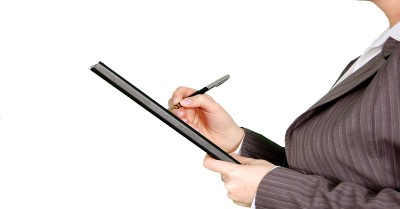
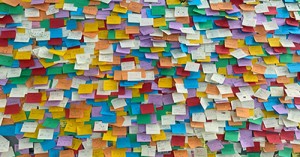
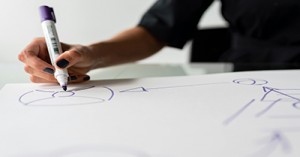
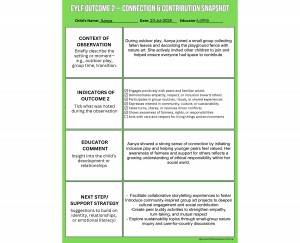
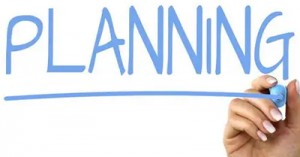
 Here is the list of the EYLF Learning Outcomes that you can use as a guide or reference for your documentation and planning. The EYLF
Here is the list of the EYLF Learning Outcomes that you can use as a guide or reference for your documentation and planning. The EYLF The EYLF is a guide which consists of Principles, Practices and 5 main Learning Outcomes along with each of their sub outcomes, based on identity,
The EYLF is a guide which consists of Principles, Practices and 5 main Learning Outcomes along with each of their sub outcomes, based on identity, This is a guide on How to Write a Learning Story. It provides information on What Is A Learning Story, Writing A Learning Story, Sample
This is a guide on How to Write a Learning Story. It provides information on What Is A Learning Story, Writing A Learning Story, Sample One of the most important types of documentation methods that educators needs to be familiar with are “observations”. Observations are crucial for all early childhood
One of the most important types of documentation methods that educators needs to be familiar with are “observations”. Observations are crucial for all early childhood To support children achieve learning outcomes from the EYLF Framework, the following list gives educators examples of how to promote children's learning in each individual
To support children achieve learning outcomes from the EYLF Framework, the following list gives educators examples of how to promote children's learning in each individual Reflective practice is learning from everyday situations and issues and concerns that arise which form part of our daily routine while working in an early
Reflective practice is learning from everyday situations and issues and concerns that arise which form part of our daily routine while working in an early Within Australia, Programming and Planning is reflected and supported by the Early Years Learning Framework. Educators within early childhood settings, use the EYLF to guide
Within Australia, Programming and Planning is reflected and supported by the Early Years Learning Framework. Educators within early childhood settings, use the EYLF to guide When observing children, it's important that we use a range of different observation methods from running records, learning stories to photographs and work samples. Using
When observing children, it's important that we use a range of different observation methods from running records, learning stories to photographs and work samples. Using This is a guide for educators on what to observe under each sub learning outcome from the EYLF Framework, when a child is engaged in
This is a guide for educators on what to observe under each sub learning outcome from the EYLF Framework, when a child is engaged in The Early Years Learning Framework describes the curriculum as “all the interactions, experiences, activities, routines and events, planned and unplanned, that occur in an environment
The Early Years Learning Framework describes the curriculum as “all the interactions, experiences, activities, routines and events, planned and unplanned, that occur in an environment